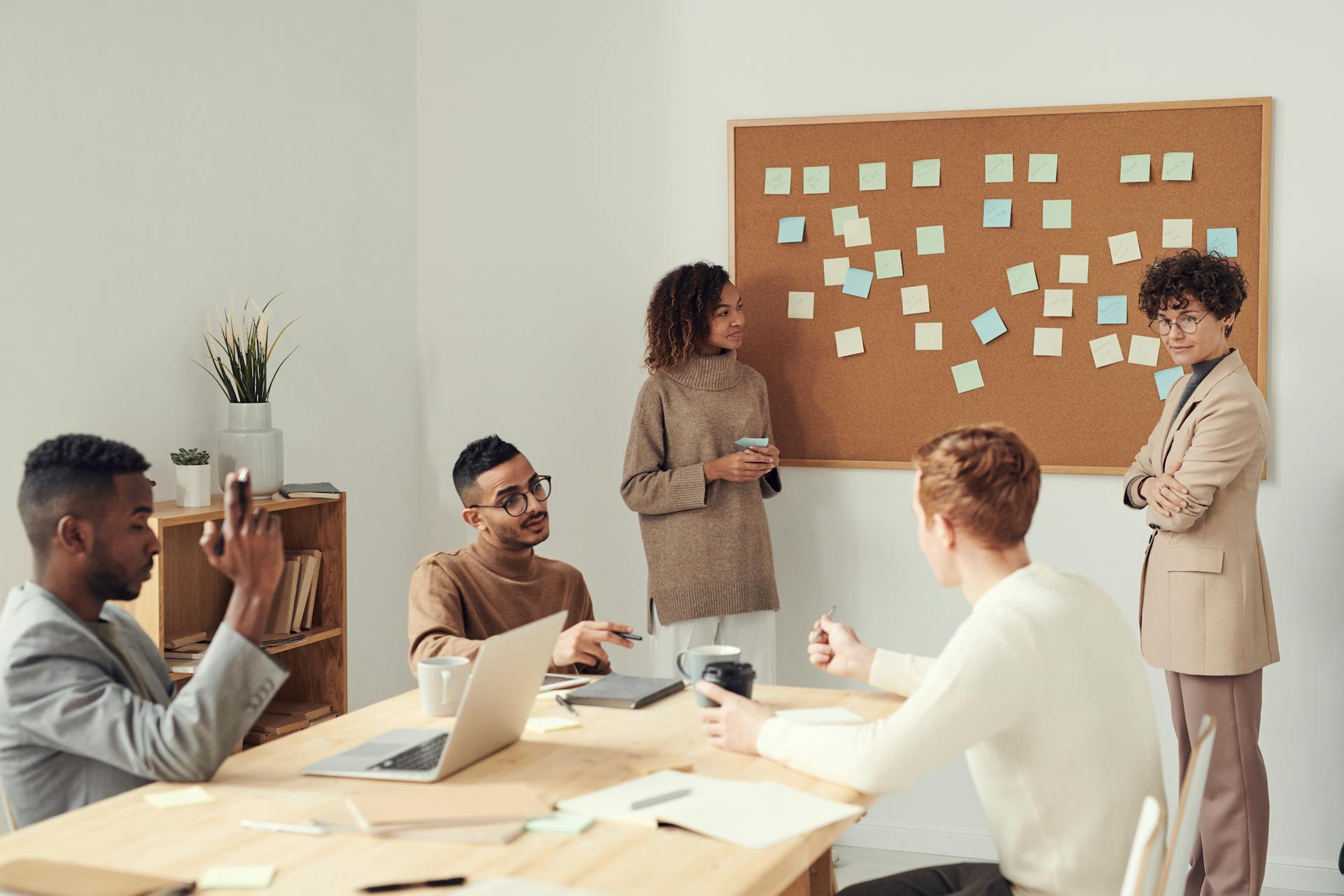Have you ever faced a really tough problem? One so complex that it made your head spin? I certainly have, more times than I can count. In the startup world, we live and breathe problems – the bigger, the better. Why? Because truly innovative solutions emerge from tackling immense challenges.
But here’s the kicker: trying to solve monumentally difficult problems all alone is a recipe for frustration, burnout, and subpar solutions.
The smartest approach is collaborative problem solving – leveraging the diverse perspectives and collective brainpower of a team. It’s like a mind meld, but better, because you get to be yourself while benefiting from others’ viewpoints.
In this post, we’ll dive deep into the world of collaborative problem-solving. We’ll explore what it really means, why it’s so powerful, and how teams can effectively harness it. Get ready for an insightful, thought-provoking journey into one of the most potent problem-solving strategies around.
What is Collaborative Problem Solving?
At its core, collaborative problem-solving is all about teamwork. It’s when a group of people with different backgrounds, skills, and viewpoints come together. They tackle a problem collectively, sharing ideas and working towards a solution.
Collaborative problem solving is the process of two or more people working together to define and solve a problem.
Sounds simple, right? Well, it’s deceptively powerful. By combining diverse perspectives, teams can see problems from multiple angles. This leads to more creative, robust solutions that a single person may have missed.
The Power of Diverse Perspectives
Why is diversity of thought so crucial for collaborative problem-solving? Let me illustrate with a rich hypothetical:
Imagine you’re trying to build a better mousetrap (yes, I’m going there). If your team were entirely comprised of industrial designers, you’d probably end up with an aesthetically pleasing, highly functional mousetrap. But what if you added an ethologist who studies mouse behavior? Or a materials scientist? Or a cultural anthropologist?
Suddenly, you’re considering factors like:
- How mice actually interact with their environments
- Potential new materials or compounds that could be more effective
- Cultural attitudes and beliefs around mice that could impact product adoption
With each new perspective, your potential solution expands and evolves. What seemed straightforward becomes multidimensional and nuanced.
That’s the beauty of diverse collaborative teams. The whole becomes far greater than the sum of its parts.
Building a Collaborative Problem-Solving Culture
For collaborative problem-solving to truly thrive, teams need an underlying culture that supports and encourages it. This doesn’t happen by accident – it requires intentional efforts from leaders.
Some key elements of a strong collaborative culture include:
- Open Communication People need to feel safe to share ideas, opinions, and concerns without fear of ridicule or retaliation. Psychological safety is critical.
- Mutual Respect
Every team member’s contributions should be valued, regardless of role, tenure, or background. Diverse perspectives are assets, not nuisances. - Shared Goals While individuals may have different responsibilities, the team should be unified around common objectives. This collective mission promotes collaboration over Competition.
- Empowering Processes Implement processes that facilitate collaborative work, like recurring brainstorming sessions, democratic decision-making models, and cross-functional initiatives.
Building this type of culture takes work, but it pays massive dividends. Innovation will flourish once collaborative problem-solving becomes ingrained in your team’s DNA.
The Collaborative Problem-Solving Process
So we’ve covered what collaborative problem-solving is and why it’s so powerful. But how does it work in practice? While there’s no single “right” process, many effective approaches follow a similar flow:
- Define the Problem
First, the team must collectively understand and agree on the problem they’re trying to solve. Openly discussing the issue from different viewpoints is crucial. - Gather Data & Perspectives Next, compile all relevant data, information, skills, and viewpoints related to the problem. This is where diversity shines – each team member contributes their unique expertise.
- Ideate and Brainstorm Time to get creative! The team pools their collective brainpower to generate a wide range of potential solutions through ideation exercises and freewheeling brainstorms.
- Analyze and Refine With a wealth of ideas on the table, the team digs in to analyze each one’s strengths, weaknesses, and tradeoffs, refining and combining them into more robust potential solutions.
- Test and Implement The most promising solution(s) get put into action through prototyping, piloting, or direct implementation. Continuous feedback loops allow the team to keep iterating.
This cyclical process keeps teams collaborating at every stage. By leveraging their diverse perspectives throughout, they co-create solutions that are stronger and more innovative.
Challenges and Pitfalls to Avoid
As powerful as collaborative problem solving can be, it’s not without its challenges. Here are some common pitfalls to watch out for:
- Groupthink When too many team members start thinking alike, diversity of thought diminishes. Contrarian opinions get dismissed instead of welcomed.
- Power Dynamics Imbalances in a hierarchy or social capital can lead some voices to get amplified over others. The most insightful perspective could get drowned out.
- Ineffective Communication If team members struggle to understand each other’s ideas and viewpoints, the collaborative process quickly breaks down.
- Creative Block Sometimes teams can get too bogged down in analysis paralysis, making it hard to generate bold, innovative ideas.
Effective collaborative problem-solving requires conscious efforts to avoid these pitfalls. Teams should promote equal candor and contribution, foster psychological safety, and create space for creative thinking.
By being aware of the challenges and taking proactive steps, teams can fully harness the power of collaborative problem solving.
TL;DR
- Collaborative problem solving leverages the collective brainpower and diverse viewpoints of a team to develop stronger, more innovative solutions.
- True diversity of thought, supported by a collaborative culture of psychological safety and mutual respect, unlocks the full potential of this approach.
- An effective collaborative problem-solving process cycles through defining the issue, gathering perspectives, ideating solutions, analysis/refinement, and implementation.
- While powerful, collaborative problem solving has pitfalls like groupthink and power dynamics that teams must proactively address.
- Done well, collaborative problem solving produces creative yet robust solutions that a single perspective could never achieve.
Q&A
Q: Isn’t having too many cooks in the kitchen a recipe for chaos?
Not at all! While it’s true that large teams can struggle with inefficiency and lack of clarity, collaborative problem solving done right avoids those pitfalls. By implementing structured processes, clear communication norms, and shared goals, teams can tap into their diversity as a superpower rather than a stumbling block.
Q: What if my team has conflicting ideas or priorities? Won’t that just lead to gridlock?
Diverse perspectives are exactly what fuel the innovation engine in collaborative problem solving! The key is to create an environment where contrasting ideas are welcomed and viewed as assets to be combined, not conflicting priorities to be disputed. With skilled facilitation and a focus on the greater mission, teams can synthesize divergent thoughts into cohesive solutions that satisfy all parties.
Q: How can I know if my team is really benefiting from collaborative problem solving?
There are a few key signals that collaborative problem-solving is working well:
- Team meetings feel energizing, not draining, as fresh ideas keep emerging
- Solutions consider factors no single person would have accounted for
- Everyone feels heard and empowered to contribute
- The implemented solutions are more robust and innovative than expected
If you’re not seeing those positive signs, it may be time to revisit your collaborative processes and team dynamics. Continuous iteration is part of effective collaboration.





